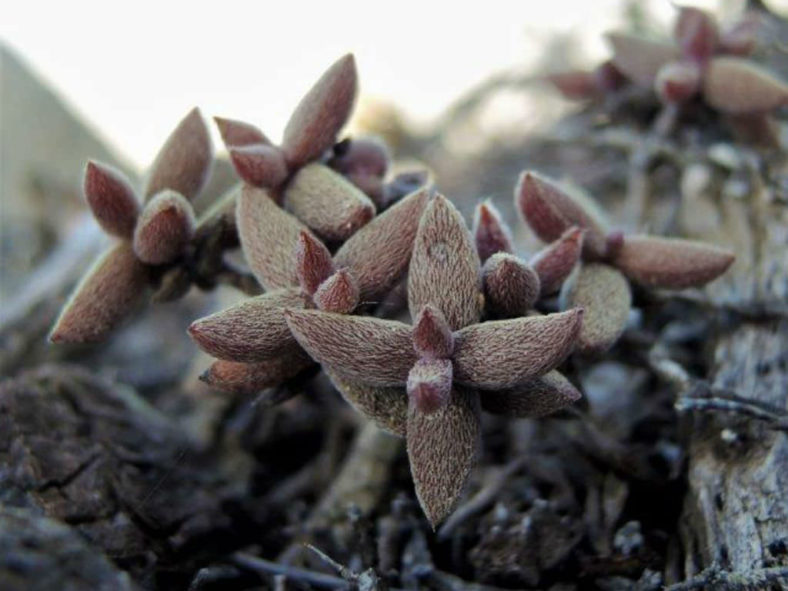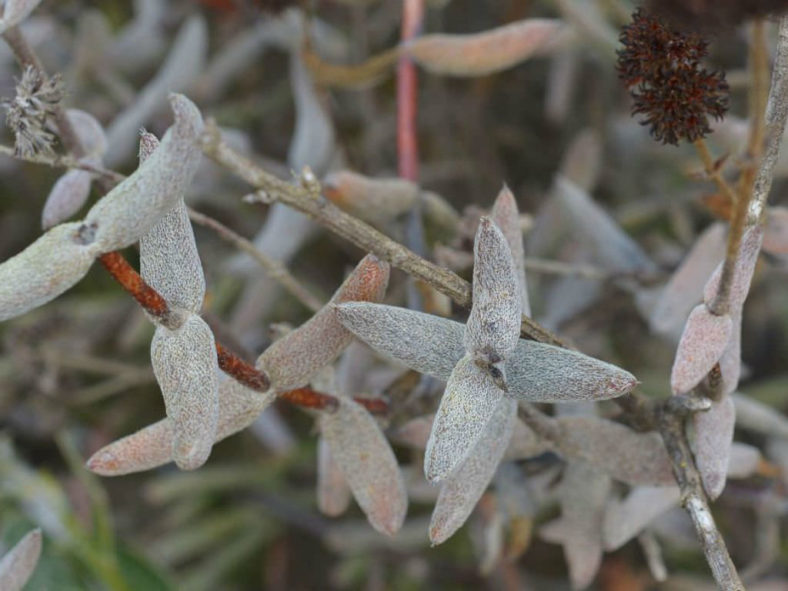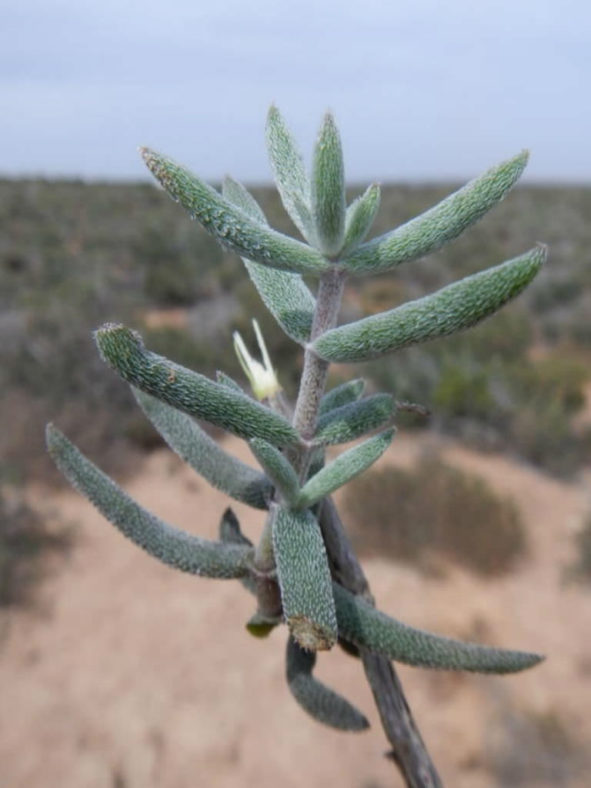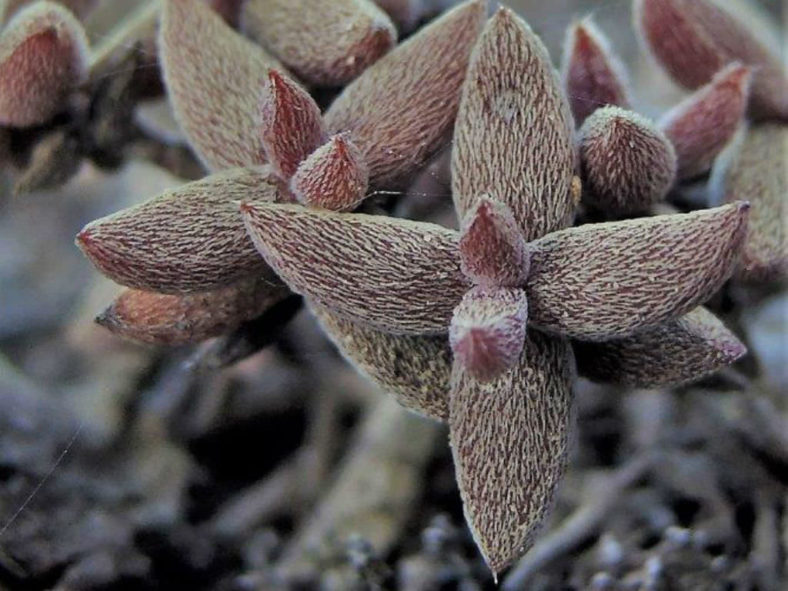Scientific Name
Crassula ammophila Toelken
Synonym(s)
Globulea ammophila
Scientific Classification
Family: Crassulaceae
Subfamily: Crassuloideae
Genus: Crassula
Etymology
The specific epithet "ammophila (am-oh-FY-luh)" means "sand-loving" and refers to the natural environment of this species that grows in the scrub vegetation of the coastal sandveld.
Origin
Crassula ammophila is native to South Africa (Northern Cape and Western Cape).
Description
Crassula ammophila is a sparingly branched succulent shrub with brittle branches and thick, fleshy, grey-green to greyish-brown leaves, all densely covered with coarse recurved hairs. It can grow up to 32 inches (80 cm) tall, sometimes climbing into the surrounding vegetation. The opposite leaves are inversely lance-shaped, with the upper face flat to slightly convex and a convex lower face. They can measure up to 0.6 inches (1.5 cm) long and 0.15 inches (0.4 cm) wide.
The tubular, cream-colored flowers appear in globular heads on short, hairy stems in spring.

How to Grow and Care for Crassula ammophila
Light: Crassulas prefer full sun to partial shade. However, intense afternoon sun in the hottest period of summer can burn the leaves of the plants. Most Crassulas can be grown indoors if given enough light. Place your C. ammophila in a southern window with at least 6 hours of direct sunlight.
Soil: These succulents are not particular about soil pH but require very porous soil with excellent drainage. Use commercial potting soil mixes designated for use with succulents, or mix your own.
Hardiness: Most Crassulas will tolerate some short-term freezing, but extremes of cold or heat will cause them to lose leaves and die. C. ammophila can withstand temperatures as low as 30 to 50 °F (-1.1 to 10 °C), USDA hardiness zones 10a to 11b.
Watering: This plant has typical watering needs for succulents. Avoid overwatering using the "soak and dry" method, where the soil is soaked with water, slowly drained, and left to dry out before watering again. Reduce watering in winter.
Fertilizing: Crassulas are slow-growing succulents and do not need much feeding. However, C. ammophila will benefit from a small amount of organic fertilizer in mid-spring.
Repotting: Repot as needed, preferably in spring, at the beginning of the active growth period. Make sure the soil is dry before you begin repotting.
Propagation: Crassulas are generally started by leaves or stem cuttings. They can also be grown from seeds and offsets. The fastest way to get decent-sized C. ammophila is to grow it from stem cuttings. Propagating Crassulas with offsets is easy because the parent plant has already done most of the work for you. Sow the seeds in spring or summer.
Learn more at How to Grow and Care for Crassula.
Toxicity of Crassula ammophila
Crassula plants are generally nontoxic to people and pets.
Links
- Back to genus Crassula
- Succupedia: Browse succulents by Scientific Name, Common Name, Genus, Family, USDA Hardiness Zone, Origin, or cacti by Genus
Photo Gallery
Click on a photo to see a larger version.


